jDrones News: jD-IOBoard v1.0 update
You had some problems on driving LED strips or something else?? Well no problems anymore.... We have seen people making all type of darlington/transistor and similar hacks to drive their LEDs, Sirens and so on but they all need a lot of hacking and they might not be suitable for long term solution.
We answered on this call and made fully Arduino compatible called jD-IOBoard that can run Single LEDs, LED Strips, Loudspeakers, Buzzers, Power switches and so on. It's upto your own imagination on what all you can control with this board.
So what does this board actually do?? It has fully Arduino compatible ATMEGA 328 MCU and Darlington array to driver high power outputs. Also I2C pins are exposed and same as many TTL level IO and Analog pins. As you can see from picture above.
Board has:
- 6 x High power outputs, max. 500mAh / 50 Volts
- 4 x Analog inputs (6 if you don't use I2C port)
- I2C port for controlling, listening I2C messages
- 6 x TTL level GPIO pins (8 if you don't use FTDI)
- 1 x FTDI port
3 high power outputs can also be controlled by PWM output while another 3 are just normal "On/Off" outputs
How those Arduino pinouts looks like:
Connecting LED's,Buzzers etc is really simple. Just use one of output pins on end of the board. Below you can see examples on how to connect LEDs or LED Strips on it.
Pictures does not give enough credit for how it works so we made small video to show just few examples on how to use it. There are many other ways to do it but this should give at least some idea what/how to run it. So have fun watching it.
Get yours from jDrones Store: jD-IOBoard and have a blink blink.
Ps. There are some nice features coming to this board shortly...
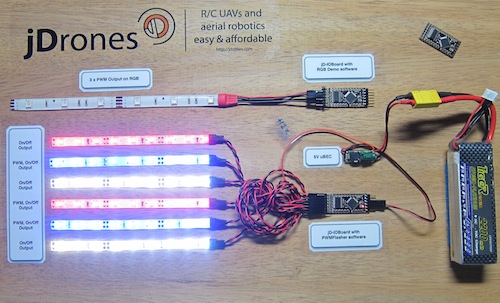
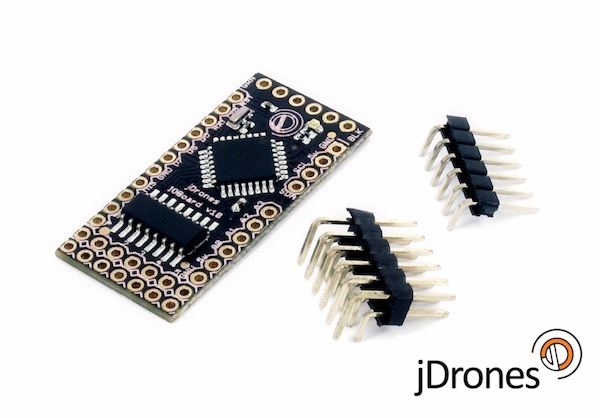
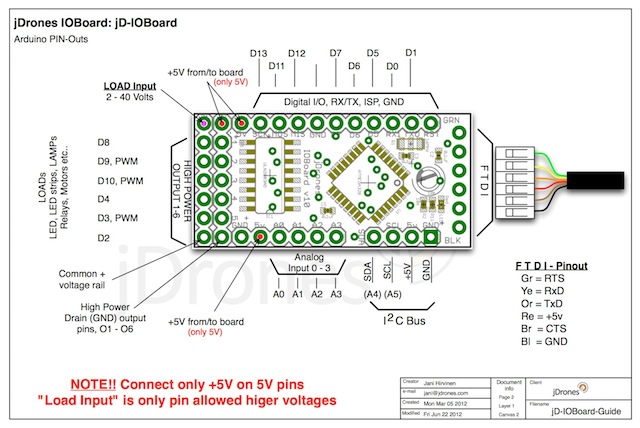
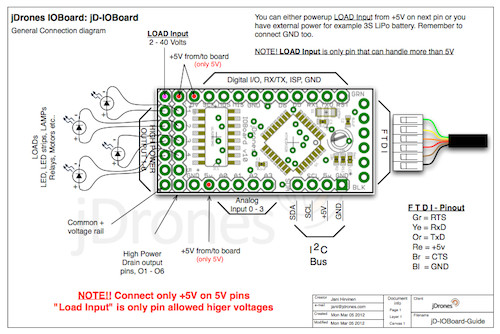
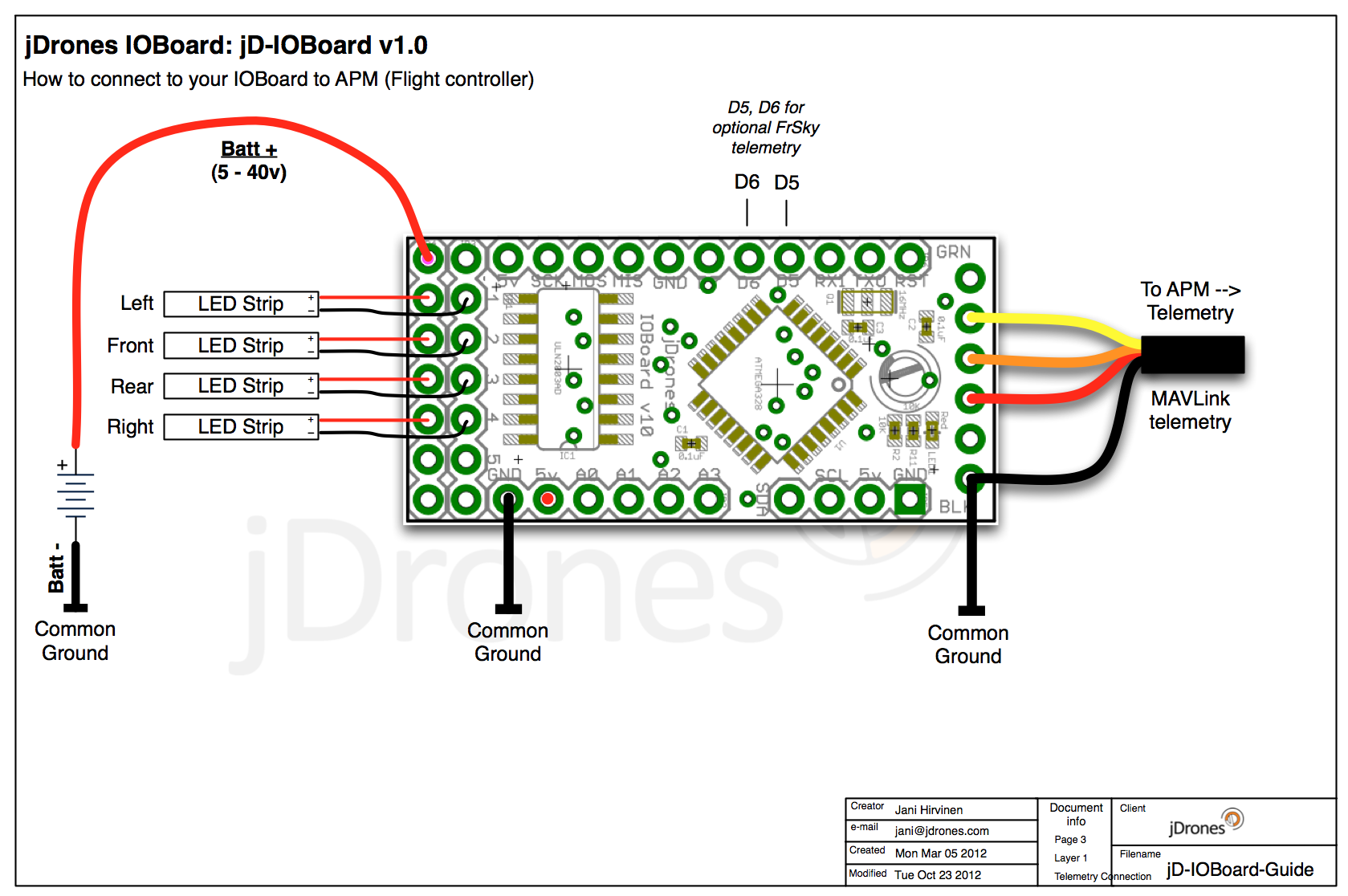
Comments
Nick, yes D7 and D2 have changed their location so you can either just swap strips on output pins or modify code. We will have soon new code guy working with us and then bigger updates can be made on Configurator and others.
Steven, I know that my girls are answering tickets everyday. Really technical issues usually ends on my table and I try to answer them as fast as can. PM me your issue and I can check from girls at downstairs...
jDrones doesn't answer emails so I am forced to file a PP dispute. This really sucks!
Never mind Jani, I got it all figured out and set up. The details are a little vague but in reading through the pages of comments I found a post that said to load the Mav 1.4 version and I got it all to work as wanted. I just moved the LED contacts around until I had it set on pins that represented the orientation I wanted.
Jani,
I have yet another question. But first I got the board all wired up and working great, but I am working to make sure I have the lights set up right and am understanding what it is telling me. In the old 1.0 diagram you showed the LED strip corresponding with what arm. So in 1.0 on the high power rail it went D8, D9 PWN, D10 PWM, D4, D3 PWM, D2
On the new 1.0 vs. 1.1 diagram you show the values being different. They are D7, D8, D9 PWM, D10 PWM, D3 PWM and D4
Since the pins changed does that mean we need to change where we put the LED strips to make sure we are getting the same messages? D3 stayed the same so that makes it easy, but I went into the code to change the other lights so they all stay blink the same and I want to make sure I have it right.
Hi, I have the same problem as Stefan Gofferje. No programming via FTDI without power cycling...
Did you find any solution to this problem?
Im using v1.1 board
Nick yes that is correct way to connect your high power/battery source to drive for example 12V LED strips.
BUT this is ONLY for v1.1 boards. On v1.0 boards extra lipo + (Red wire )would connect on same way but lipo - (Black wire) would go another way or would just connect on common ground.
Jani in your post you make this statement:
I want to get some clarification the last sentence. Does this mean we can use a secondary battery and it will only power the high voltage rail if we use a 2 pin cable. Here is a picture to make sure I am understanding. Sorry if over simplistic but I already fried one ioboard because some of the old directions were not clear. These new ones appear to be better but now I am a little wary.
@Jani & @Arseni thanks for explaining....
I have the AttoPilot, the 3DR Power Module and the Fas100. I was curious if you were tapping into the Power Module to send signal to FrySky... I thought that only 5V was coming from the Power module and knowing that the FrySky was sensitive to 3V... its all good... With the IOBoard, i get Telem on the Radio now... but before I had to have another way to send V/A to the Radio Telemetry. I was just wondering if someone had tapped into the Power Module.
Thanks again, Great work on the IOBoard updates...
-
1
-
2
-
3
-
4
-
5
of 24 Next